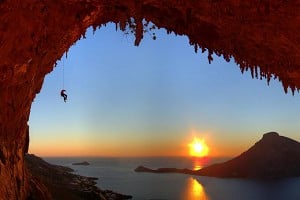
Scotland in the winter is hard to define. It's big, but not massive. It's hard, but only as hard as you want it to be. It's adventurous and inspiring and beautiful and brutal. Maybe that's something of the appeal; it's a captivating spirit.
So where to begin if you're a student and you aspire to be a well-rounded winter climber when you pop out the other end of three years of higher education?
***
Four years ago, during my second year of university I decided I wanted a piece of it. With enthusiasm and apprehension in equal measure, a friend and I scraped together the kit and caught a 10 hour coach to Fort William.
I am not a cutting edge winter climber or a 'Grade VII hero', as someone once phrased it to me. So this is not about how to climb like a wad, but more about how to safely approach winter climbing as a student with a limited budget but huge amounts of free time and buckets of psyche.
These are my (very general) top five tips for students wanting to get into winter climbing.
1. Read and Learn
It's worth reading a few old books. Winter mountaineering and climbing in the UK has a huge background to it, possibly more so than many other aspects of climbing. The Victorians were climbing winter routes in Scotland pre 1900. It's worth reading their stories, you'll be in awe of what they accomplished.
Before rushing up to Scotland to get stuck in, do a tonne of research. Winter climbing is a Pandora's box of grades, gear and ethics. A good place to start is a BMC winter skills lecture. These are delivered by some of the UK's best and are very cheap for students to attend…you may even win some gear in the raffle. If attending one of these has whet your appetite, and you're now frothing at the sight of a perfect snowscape, hold on.
Tom Livingstone is, amongst other things, an accomplished winter climber having on-sighted Scottish Grade IX. He is also an ex-Bangor University student. "The ideal introduction is to start with instruction. I was lucky; I did a week long winter skills course before going to uni. It is expensive, but if you get the opportunity then do it".
The BMC subsidise winter skills courses at the National Mountain Centre (Plas-Y-Brenin – worth going just for the cake). Whilst Wales is not famed for its reliable winter weather, the centre makes use of old railway sleepers to teach walking in crampons and lots of imagination to teach arresting a fall with an ice axe. Navigation and general mountain etiquette are also demonstrated. With a little begging these courses can be subsidised to the point of being free with help from university sports departments if going as part of a mountaineering club.
These courses are extremely good value, if you have the option to attend one. Do. It will pay dividends for years to come.
Nick Carter holds the MIC and is the St John Scotland Mountain Safety Instructor, a role working with Mountaineering Scotland but wholly funded by St John Scotland:
"St John Scotland have put huge amounts of money into Scottish Mountain Rescue over the years and my role was seen as providing preventative care for a group of hill users who have in the past been statistically more likely to be rescued."
Nick is based in Scotland and liaises with university club committees: "I join each club on a winter weekend meet. I then go out on the hill with students and give them free winter skills or winter mountaineering tuition or winter climbing training."
This kind of affordable, professional guidance is vital. Nick continues:
"I think over the past few years clubs have become more likely to bring in professional instruction to teach their freshers and beginners in basic winter skills. However, when it comes to winter climbing I think it is generally still assumed that students that want to learn to winter climb will pick it up by teaming up with someone more experienced. If that 'someone' is both more experienced and does things in a safe way then that's generally the way that many climbers learn in their climbing apprenticeship and that's great. The problem comes when the 'more experienced one' doesn't know much more than the beginner and does things unsafely or if there is no one more experienced and then beginners go out together and often get themselves into trouble."
Tom adds that if you "try and get the kit together and go up for a week or more at a time, you'll make big gains" …and "If you don't have experienced people or instructors to learn from, it'll be slower and harder to progress".
2. Gear Up
After grades, people will debate the good, the bad and the ugly of gear endlessly. Softshell over hardshell being one of the perennial points of disagreement. As a first timer, you don't know how efficient you'll be, how fast you'll be moving or how well you'll handle the changeable conditions.
If you're on a tight budget, so long as you have a good amount of synthetic insulation, a good outer shell (top AND bottom) with a few good pairs of gloves and some warm boots, you can stick whatever you want on underneath. Within reason. A £10 fleece can work very well as a midlayer under a waterproof or softshell. Hard and soft shells are expensive, but if you shell out for anything, get a good shell.
A great trick for keeping warm and comfortable is to take two base layers, wear one on the approach and sweat your breakfast into it… then put on the fresh one before starting the climb. Braving a chilly changeover will keep you warmer overall as the sweat from the walk in will have been exchanged for a bone dry layer. That and cheap base layers stink very quickly.
It's worth investing in some good, warm B3 boots. Andy Kirkpatrick provides some wisdom on this subject here. While some of the slick modern boots are super lightweight, colourful and eye catching, they're quite often designed for a faster style of climbing. A chunky boot like the Scarpa Mont Blanc GTX or the La Sportiva Nepal Extreme might not look as cool but has a load more insulation and is crucially much cheaper than something with a built in gaiter.
Gloves are the final vitally important piece of clothing. Get at least three pairs.
Protecting yourself on a winter route is quite similar to summer trad and scrambling, using nuts, spikes and threads; you'll sometimes need to get creative. Cams are not especially useful and for the price difference you'd be better off with a jangly set of hexes. You can batter them into icy cracks that cams would just skate straight out of. Ice screws are useful for the fatter ice routes, with the shorter lengths usually being more use than the longer ones. It's also a good idea to get dry treated ropes or Nikwax any you plan to use. Frozen rope is incredibly difficult to do anything with.
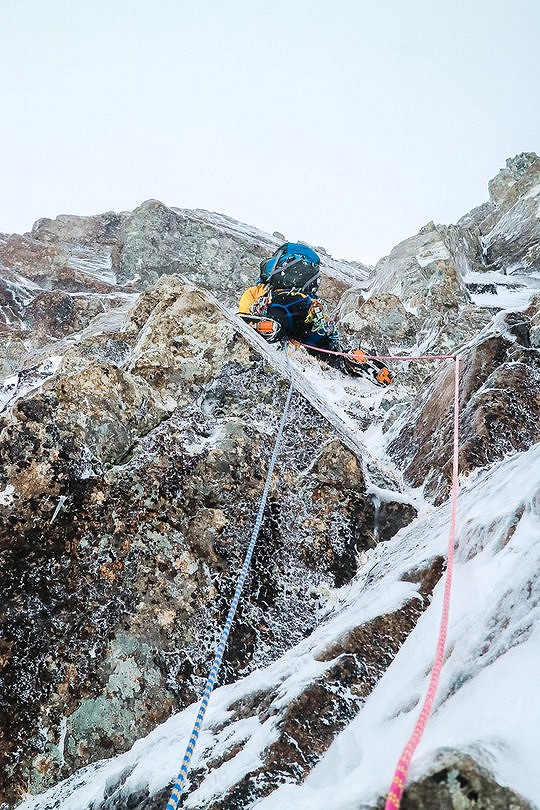
I'm convinced some winter climbers are 50/50 on the love of gear/love of climbing scale. That said, this means there is a thriving trade in quality used gear from people who have just shelled out for the next mythical jacket *now with discreet rhinestoned wings attached*. The UKC for Sale Forum always hots up around this time of year as people have massive clear-outs when they realise their appetite for gear has got out of hand. Also worth looking at is the Outdoor Gear Exchange Facebook group; it has a remarkable forty three THOUSAND members offering all manner of stuff claiming to be 'barely used'.
It's important to mention that buying slings, ropes, harnesses and anything textile based second hand is not a good idea; 'like a used mattress…you don't know where it has been'. Some would even extend this to any protection and protective equipment, such as helmets, nuts and cams.

Read this UKC article on what to wear for Scottish winter.
3. Psyche up to commit
Unless you're lucky enough to attend a Scottish University and pay minimal tuition fees, getting to Scotland will mean long drives at night. Add to this the fickle weather and the cost of fuel, and suddenly a weekend in Fort William commands more of your time and financial commitment than you ever thought possible. This is where the most vital ingredient in winter climbing comes in. You have to be keen.
Student climbers are nothing if not keen.
As Tom puts it: 'I didn't spend much on anything other than climbing and partying; you have lots of time at your disposal…and living somewhere like Bangor, you'll always have partners"
Be smart about where you try to apply your enthusiasm, though. As Ben Nevis is the highest point in the UK it naturally retains winter conditions more reliably than many of its rivals. It does however get some nasty weather due to its position on the west coast. More often than not my student exploits ended up here, bemoaning the walk in but being able to climb something on a day that would have been claggy and soggy at lower elevations.
Try to get a pool of keen friends together, ideally with a car or two between you. Feed off each other's psyche. Then keep a watchful eye on the Mountain Weather Information Service (MWIS) and the indispensable Scottish Avalanche Information Service (SAIS) for windows of clear forecast. Be nice to people because the bigger the group of friends, the more likely it is that you'll find someone to join you. When you have limited time, a reasonable weather forecast can be a godsend for actually getting up stuff. One good weekend can make a season. If the forecast doesn't turn out what you expected, at least you'll have a weekend in Scotland with your mates; you might even find an umbrella in a bush.
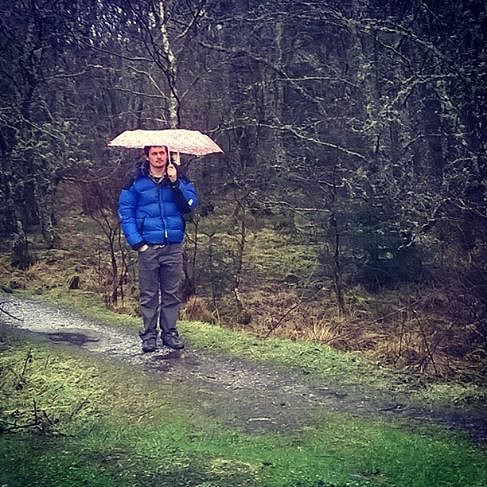
While the most students can usually do is a weekend, spending at least a week a season in Scotland will give you the best chance of improving. It's widely accepted that when you're at the very beginnings of a sport the best thing to do is to get out, and get out a lot!
Driving through the night or getting overnight public transport naturally puts you in Scotland in the small hours of the morning. Being the frugal student you are, where do you sleep for three hours before getting up, necking a coffee and starting the walk in?
You bivvy of course.
4. Bivvy
There is a standing joke that bivouac or 'bivvy' is a French word for mistake. While a forced bivvy on a route should be considered a mistake, routes like Tower Ridge see many benightments of slow parties. A planned bivvy of the Scottish winter kind is an excellent money saving tool. The word covers anywhere and everywhere you put down a sleeping bag and spend the night. Be it in a layby, in a car park below a mountain or the Glasgow Bus Station. The latter being pretty comfy until a drunk Glaswegian slaps you awake.
A successful bivvy has a few essential elements.
A warm sleeping bag – Down is good if you know it'll be a dry night or that you have a bombproof bivvy bag. For damp winter bivvys a synthetic insulated bag or hydrophobic down is better. Synthetic bags also come with the added benefit of being cheaper.
Bivvy bag – From the most basic of offerings (see pic below) to the hooped bags that are practically tents, a bivvy bag provides a good water proof (ish) cover to your sleeping bag and cuts down significantly on wind chill.
Tarpaulin and roll mat(s) – The tarp keeps ground moisture at bay and the roll mats provide cushioning and insulation. Use as many mats as you have, and if you can fit them in, take a couple of bouldering pads for tip top luxury.
Clothes – If, like myself for the first few years, you cannot afford a proper sleeping bag you'll have to wear all your clothes; belay jackets work well to make up the difference. It's also good to put your boots and gloves for the next day in the toe of your bag. Putting on frozen boots in the morning is not nice.

Extras that make the whole thing much more pleasant include tea/coffee making facilities placed close enough to brew without getting out of your cocoon and a dry bag stuffed with clothes for a pillow.
The above is a best case, well planned bivvy. Personal bivvy highlights include no sleeping bag, no roll matt, no bivvy bag and being informed by the local police that where I was had a problem with ladies and gentlemen of the night. Thankfully they all happened on different occasions.
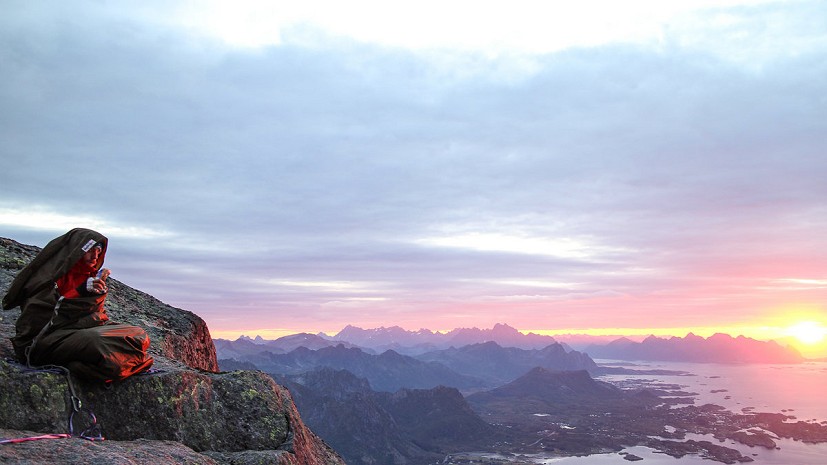
If you're not keen on a bivvy and your budget will stretch a little further, Scotland has a huge number of club huts and YHA hostels often in prime position for mountain sports. Some you do have to be a member of that club to use, but others are available for booking to anyone, all year round. Huts do get booked up quickly for the winter season so it is good to book well in advance.
5. Keeping safe and knowing when to bail
This is a good thing to be good at! If you get to the CIC hut and the wind is throwing you on the floor while you slog through feet of fresh snow, turn around. Go for a walk around Fort William, check out the Morrisons. Buy that cheesecake Dave Macleod spent two and a half years agonising over, just don't go climbing. This is sometimes frustrating to call but as Nick explains:
'For many students when they begin winter climbing they will start without any formal training. In summer you might be able to 'scrape by' with just a little knowledge and lots of enthusiasm but in winter the environment is a lot less forgiving. Navigation is harder with frequent 'whiteout' conditions. The weather is more violent and the basic summer mountain clothing just isn't up to the challenge of the winter storms that frequently batter the British Isles. I think that one of the main pitfalls of any young person venturing into the mountains in winter is that of underestimating the seriousness of the situation that they can get into very quickly. For example, avalanches happen frequently in the hills of Scotland and they are not to be taken lightly.'
This is evidently important for all winter climbers. But the risks are only increased when the very student-centric factors of inexperience, time limitation and lack of investment are combined into a perfect storm increasing the probability of things going wrong. Or as Tom puts it:
'The potential for an epic is very large in Scotland, just seriously don't fall off!'
Winter climbing in the UK is truly special. If you've successfully lifted Pandora's lid, taken the physical abuse the whole thing throws at you and enjoyed it, you're probably hooked. Ultimately it is a wonderful time of year to be in the mountains. A time when the water in the streams is so cold it'll make you say 'wow' like Steve McQueen drinking moonshine in The Great Escape. If you're still mad for it after your first, probably not very productive season, then you're going to keep coming back for more. You'll invest time and money. A lot of the time you'll ask yourself why you're there.
But then other times it is pure magic.
I'd like to thank Nick Carter and Tom Livingstone for their assistance with this article.
As well as Laura Woodhouse, for correcting my terrible grammar.
More information on Nick's role with Mountaineering Scotland can be found here, while Tom's relentless enthusiasm for all things climbing is documented on his blog here.
- DESTINATION GUIDE: Beyond the South Pembroke Top 50 - E1 to E5 27 Jun, 2019
- ARTICLE: My Pembroke - A Local's Perspective 27 Sep, 2016

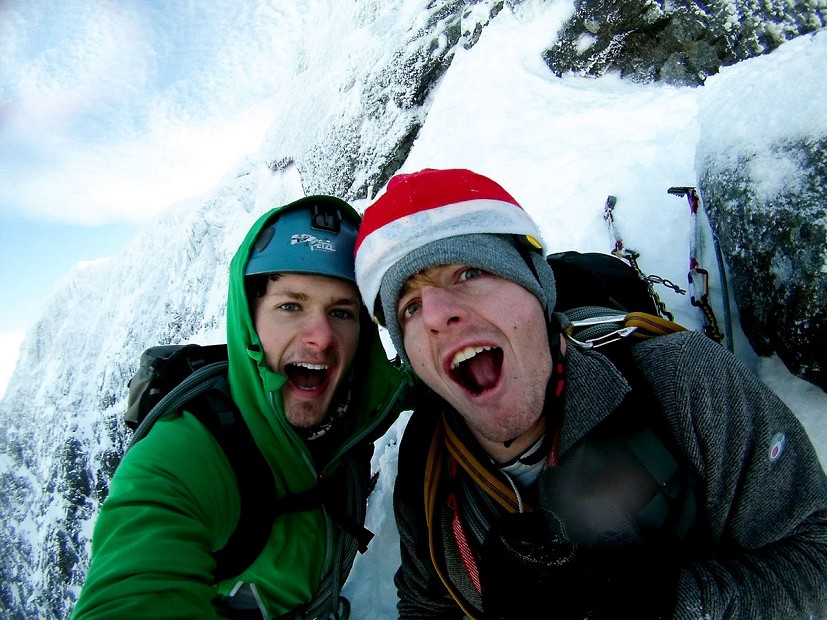
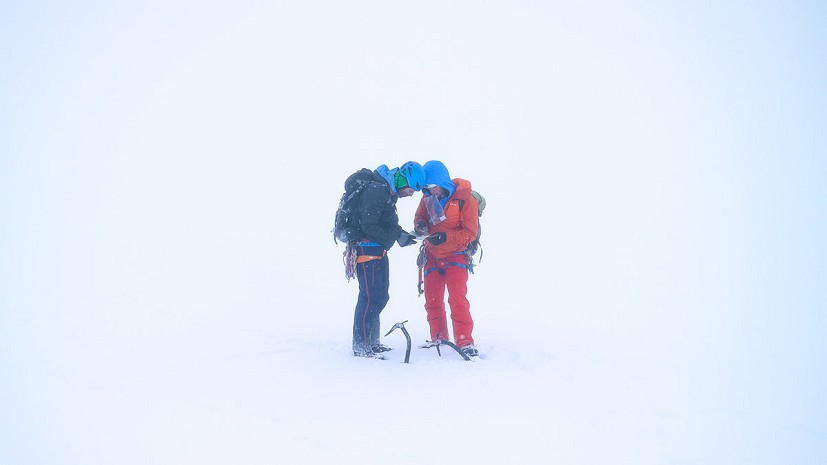
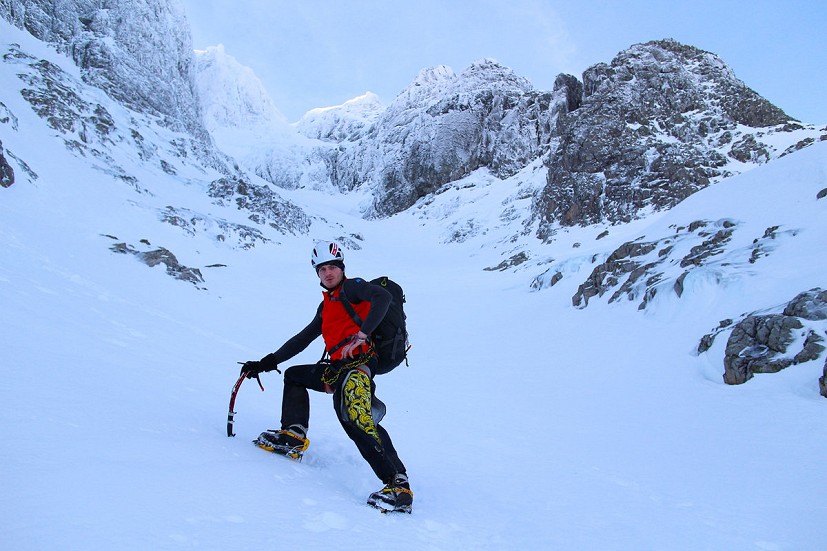
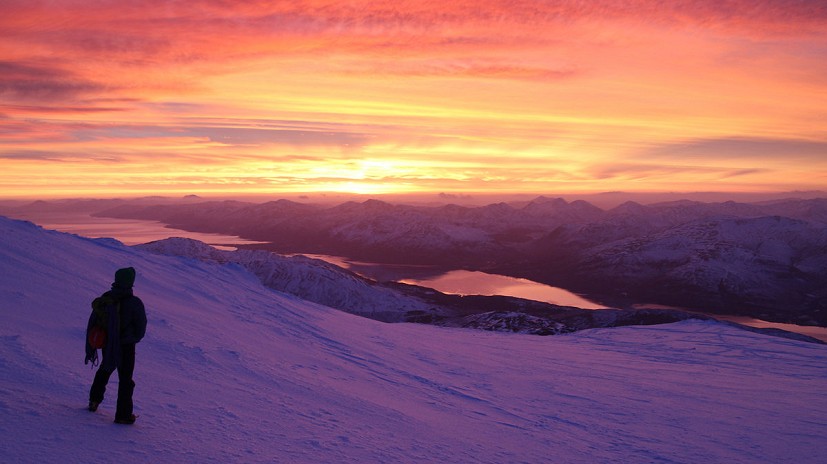
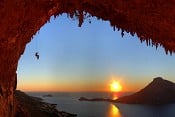
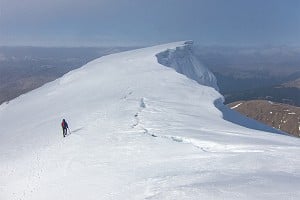
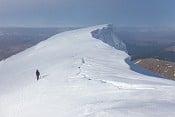
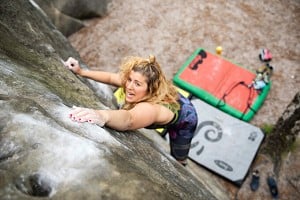







Comments